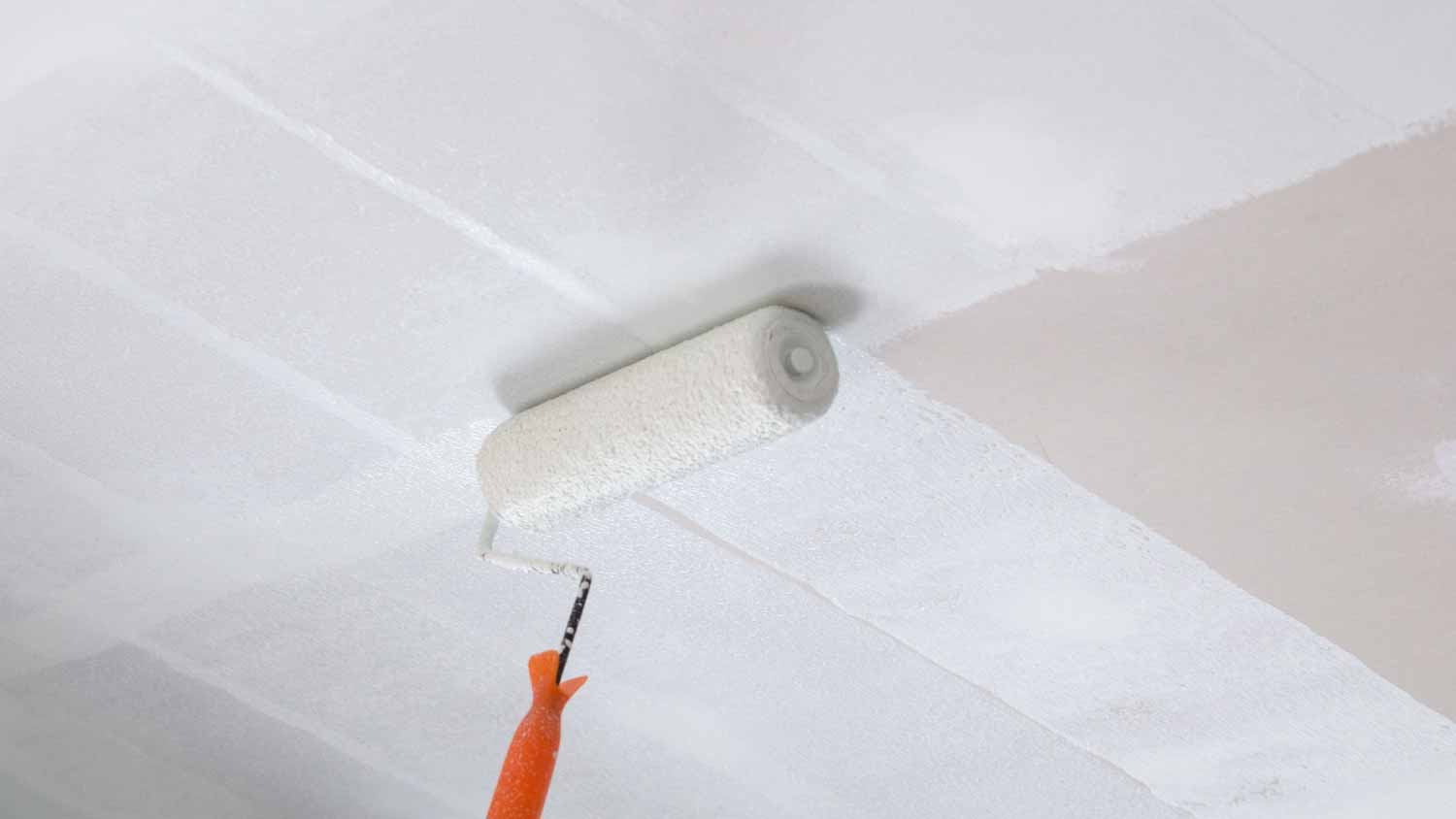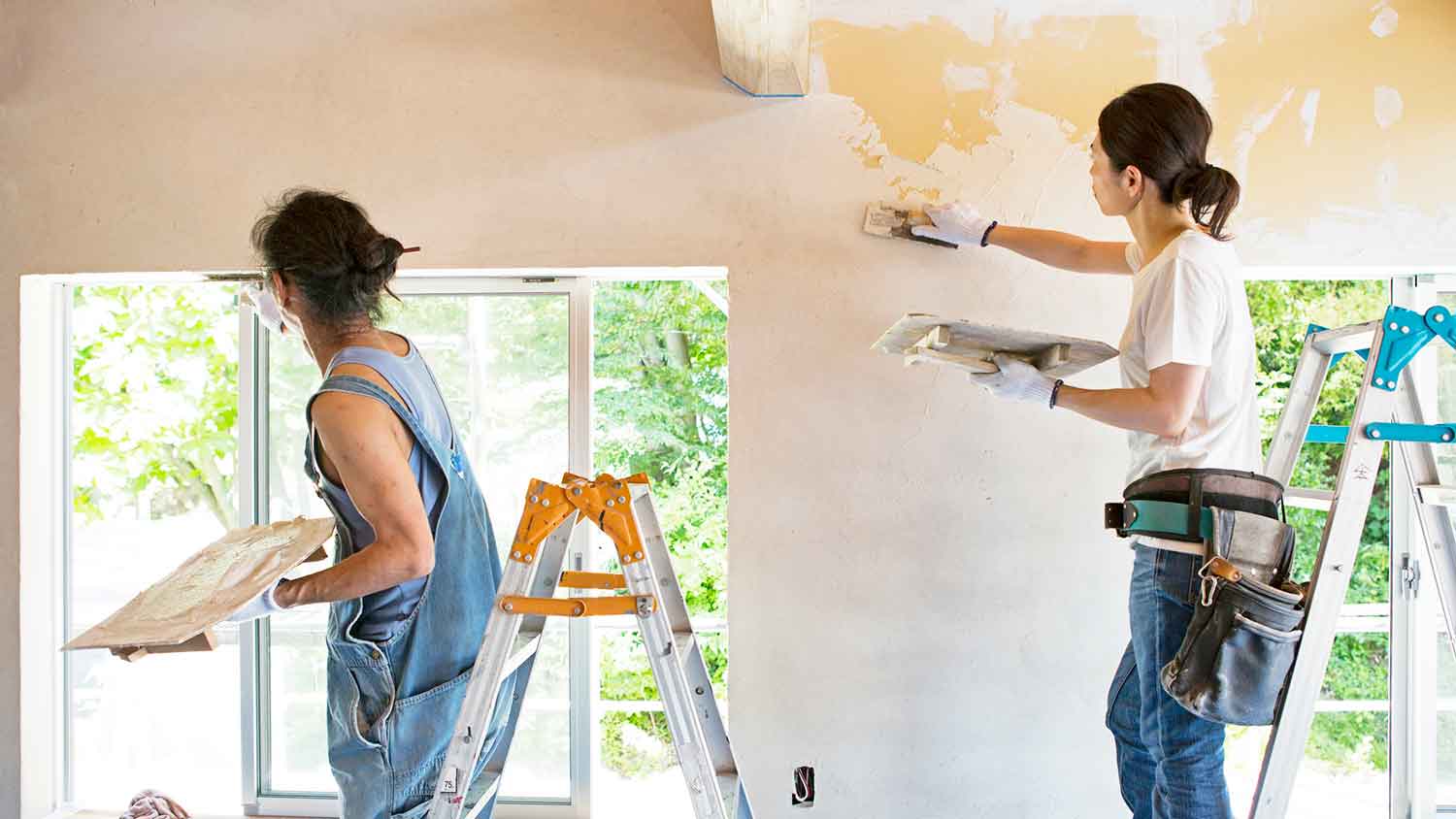How Many Times Should You Mist Coat New Plaster for the Best Finish?
Don’t let the mist coat leave you mystified


Apply one to three layers of mist coat for the best results.
To make mist coat, combine three parts paint to one part water.
Wait four weeks for plaster to dry before applying mist coat or paint.
Let each layer of mist coat (and later, paint) dry for at least 24 hours.
A mist coat can be the difference between a long-lasting paint job with a seamless appearance and a paint job that flakes and peels just months after you put away the paintbrushes and cans. But how many times should you mist coat new plaster, and how do you mix the right mist coat in the first place? Here’s how to make your new plaster look its best for years to come.
What Is a Mist Coat for Plaster?
A mist coat is a diluted first layer of paint that helps the actual layers of paint adhere to plaster rather than being soaked up by the plaster. The mist coat acts as a base or primer, but the difference is that you can make the mist coat using a paint that’s similar to the one you plan to apply as a top coat to the plaster.
Applying a mist coat often costs less than using primer and is well-suited to prepping new plaster for a makeover. Primer, on the other hand, works best for repainting existing walls or other materials, like wood or metal.
When to Apply Mist Coat to New Plaster
The new plaster is up, and you’re eager to move on to the painting phase to bring the room to life. But before you pick up that paint roller, keep in mind that fresh plaster needs plenty of time to dry. Otherwise, you risk ruining your new paint job and wasting money on extra paint. Let new plaster dry for at least four weeks before you move on to the mist coat stage.
How Many Times to Mist Coat New Plaster

You often only need to apply one layer of mist coat to new plaster, but you can also do up to three coats for the best results. The mist coat helps seal the plaster and will keep it from soaking up the paint (which would cause the finished paint layers to peel and crack prematurely).
By applying two or three layers, you build more of a barrier to prevent absorption and provide a smooth, even, and long-lasting finish.
How to Prep a Mist Coat for New Plaster
Mist coat is only as reliable as the paint you use for this step. Opting for vinyl-based paint or creating a mixture that is too watered-down can actually cause the paint to bubble, blister, or even fail to stick to the wall. Here are some best practices for prepping your mist coat.
Choose a Non-Vinyl Paint
You don’t need to use the high-end paint you’ll use for the top coat. Instead, opt for a lower-cost, acrylic- or latex-based paint. More specifically, look for non-vinyl matt emulsion paint, often labeled as contract or trade matt. These options offer a sealing base coat that is still porous and breathable, so it won’t cause the paint to chip, flake, or bubble.
Use a Three-to-One Ratio
To make mist coat, you’ll want to water down the paint by at least 20% and up to 75%. The sweet spot is to combine three parts paint to one part water. Stir the mixture to make sure it combines well. If it’s too thick, you can keep adding small amounts of water until the mixture is thin without having too much water sitting on top.
If you’re having trouble preparing the mixture or you make a mistake and need to clean up a messy mist coat or fix the plaster, make sure to consult a plaster repair pro near you before moving forward with the project. A pro will help ensure your plaster is in good condition and the paint job is as smooth and long-lasting as possible.
Dry Time for a Mist Coat
The mist coat should dry for at least 24 hours before you apply another layer of mist coat or start painting. Once the final coat of paint is on the walls, you should wait between seven and 30 days for the paint to fully dry. That means that even when the top coat is finished, you should give the walls plenty of time to cure before you start searching for studs in the plaster to hang your family photos on.
Frequently Asked Questions
You can test to see if your mist coat has worked by using masking tape after the drying period. Apply masking tape to an inconspicuous area of the wall after the mist coat has had at least 24 hours to dry. Then, peel off the tape. It should come up clear, with no paint residue. If it does have paint residue, you may need to remove the mist coat and try coating the plaster again with a different ratio of paint and water.
Yes, a mist coat can be too thick. If you don’t dilute the mist coat enough and you apply a thick coat to the wall, the plaster won’t be able to evenly absorb the coat. This can cause the later coats of paint to not adhere to the mist coat or plaster, leaving behind flaking, peeling, or bubbling paint. Even if it doesn’t flake or peel right away, a thick primary layer of mist coat can also cause the final paint job to look uneven.
Using a roller allows you to apply a mist coat quickly to avoid uneven spots while drying, but it can create streaks and splatters from the watery paint. Applying with a paintbrush can take longer but may be less messy. There are pros and cons to using either a roller or a brush for the mist coat. The mist coat is diluted, so it can be messier to work with, but it also dries quickly.















